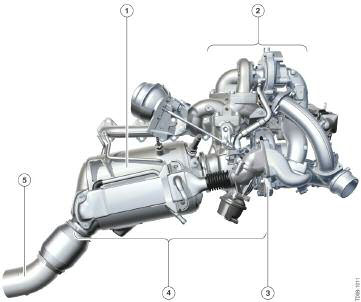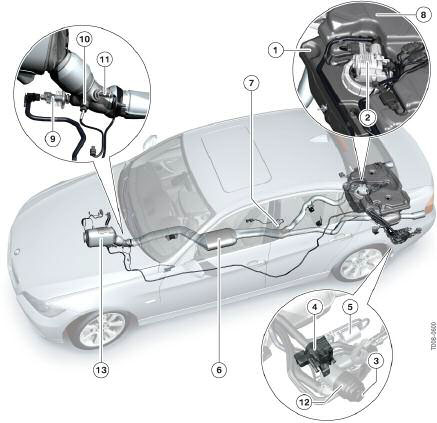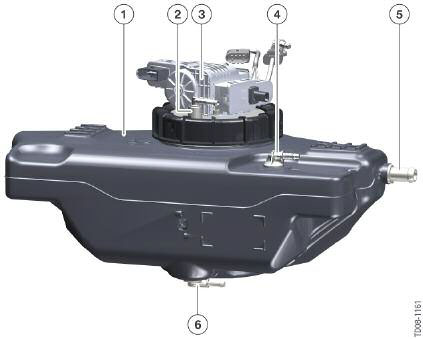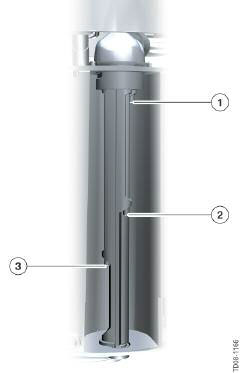 I used to drive a 2001 Honda Accord. It was the first car I bought with my own money. I put 212,000 miles on it without it having a major problem. However, I have a pretty good job and wanted a new car so in December of 2011 I bought a 2011 BMW 335d. The D is for Diesel, specifically a twin-scroll turbo diesel that makes 265 hp and 425 lb-ft. It is also an environmentally responsible “Clean Diesel” that gets 36mpg hwy and has a veritable phalanx of emission controlling and tempering technology installed. I have found a 118 page training presentation BMW made for its maintenance staff detailing the myriad parts and how they work, down to the chemistry of the “selective catalyst reduction” in which a heady mixture of water and UREA are sprayed into the exhaust to react with the terrible acid rain causing Nitrous Oxides and turn them into H2O and N2 and fresh lavender scent.
I used to drive a 2001 Honda Accord. It was the first car I bought with my own money. I put 212,000 miles on it without it having a major problem. However, I have a pretty good job and wanted a new car so in December of 2011 I bought a 2011 BMW 335d. The D is for Diesel, specifically a twin-scroll turbo diesel that makes 265 hp and 425 lb-ft. It is also an environmentally responsible “Clean Diesel” that gets 36mpg hwy and has a veritable phalanx of emission controlling and tempering technology installed. I have found a 118 page training presentation BMW made for its maintenance staff detailing the myriad parts and how they work, down to the chemistry of the “selective catalyst reduction” in which a heady mixture of water and UREA are sprayed into the exhaust to react with the terrible acid rain causing Nitrous Oxides and turn them into H2O and N2 and fresh lavender scent.
The primary components of this system are:
The Diesel Particulate Filter (DPF) which is a metal filter in the exhaust line that collects diesel soot particles and then periodically “regenerates” itself by having fuel sprayed into the hot exhaust which ignites, heats the DPF to over 250°C and burns the soot into CO2 releasing it downstream. A DPF can become so clogged that regeneration fails. Regeneration also becomes less effective over time. The filter will have to be replaced eventually.


The ECU and auxiliary data collection and sending systems which control the general engine function as well as the EGR valves, DPF regeneration, SCR injection via feedback loops with the various air flow, temperature, level and chemical sensors.
So here’s the problem. My car is now a little more than three years old. I have put 65,000 miles on it because I have a 50 mile per day commute plus I drive to visit family and do other things. My warranty expired at 50,000 miles at about 2.5 years of ownership and I did not purchase an extension for the warranty. A month ago the car started saying it wanted service. Then it started saying the DEF tank was low and threatened that it would not start anymore in 1000 miles. Then the “Service Engine Soon” light came on. I scheduled service and took the car in. After looking over the car for a day the dealership declared that the level sensor in the active SCR tank had failed (code 4BAC). And then things got absurd. The level sensor, which is nothing more than two closely spaced electrodes which complete a circuit when immersed in corrosive DEF, is not serviceable. You cannot take this sensor out and clean it. You cannot take it out and replace it. You must replace the entire active tank if the sensor fails at a cost of $1030.00 plus labor (another $1000-ish).


What would possess an engineer to design this thing in this way? Sensors fail. It is one of the most common things to happen in a modern car. O2 sensors fail. Fuel level sensors fail. I’m sure the NOx sensors fail. I know that the Mass AirFlow sensors fail because people are constantly having problems with them on these cars. Serviceable sensors is a basic engineering principle. You must be able to test and replace faulty measurement devices in any endeavor which relies on data collection.
I am not alone in my plight. The internet is rife with complaints about similar issues. I knew what the fault code was before I saw it on the service invoice because the internet knows what it is. I now know what the other codes are that will be thrown as carbon builds up in the EGR system, the DPF clogs, and all of the rest of the, apparently, remarkably fragile emissions control system collectively shits the bed.
However, dear reader, there exists a solution. A solution particularly particulate and possible in the fair state of Texas. We have no emissions requirements for diesel vehicles in this state. I cannot be failed at inspection for emissions on my car. This is comical. The guys in their jacked up trucks with mud tires and a six inch sewer pipe sticking out of the center of the bed as an exhaust pipe trailing a plume of black smoke the envy of an 1850’s steam locomotive are doing nothing wrong in the eyes of the law. They Roll Coal with the blessing of the statehouse.
So, if you don’t want a bunch of fiddly, badly designed shit to break and render your fancy luxury sport sedan inoperative what are you to do? Why remove it all, of course. Remove the SCR tanks, there’s a 100 pounds of corrosive fluids, tanks, pumps and shit gone. Remove the SCR catalyst. Remove the DPF and the exhaust mixing plate. Block the EGR ports. But what about the computer? It requires that these things be operational. It literally will refuse to start if they are inoperable. The ECU cares about Mother Earth even if the legislature doesn’t. Ah but ECUs are reprogrammable. Even the nasty, tamper resistant ones like equipped in the 335d.
Here’s the punchline. The reprogrammed ECU has different mappings as well. And now that the exhaust is blissfully free-flowing, freed of two separate catalytic converters, a mixing plate like a static fan rotor, and a fine metal sponge-like particulate filter, the engine can stretch its legs. Reports I’ve read put the retune at +100 hp, +60 lb-ft and +5-10% fuel economy. That’s right, it uses less fuel and makes significantly more power. The power and torque curves are flatter too. And because the engine is tuned properly it still won’t leave a cloud of black exhaust. Though you could manage that if you leave the DPF regeneration fuel injector in line.
So what to do? Keep limping the emissions controls along? Write my futile nastygrams to BMW of North America and hope for recalls and the fabled “Good Will”? Or spend an equivalent amount, delete it all, get a Calvin-peeing-on-Mercedes-logo window decal, a BAVARIA SHALL RISE AGAIN! bumper sticker and a horn that plays Dixie in the key of Tuba? I know which way I lean.